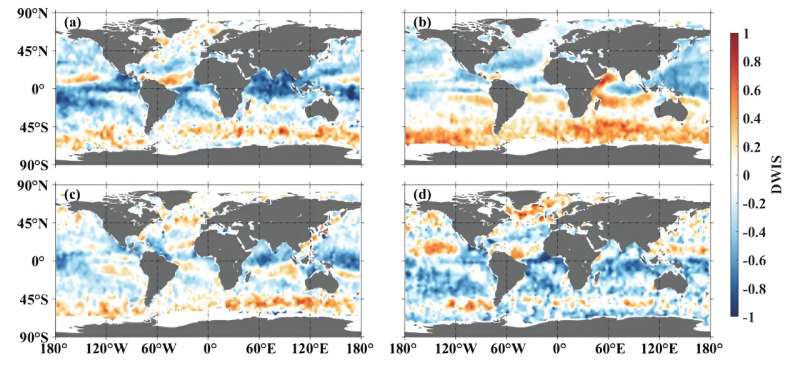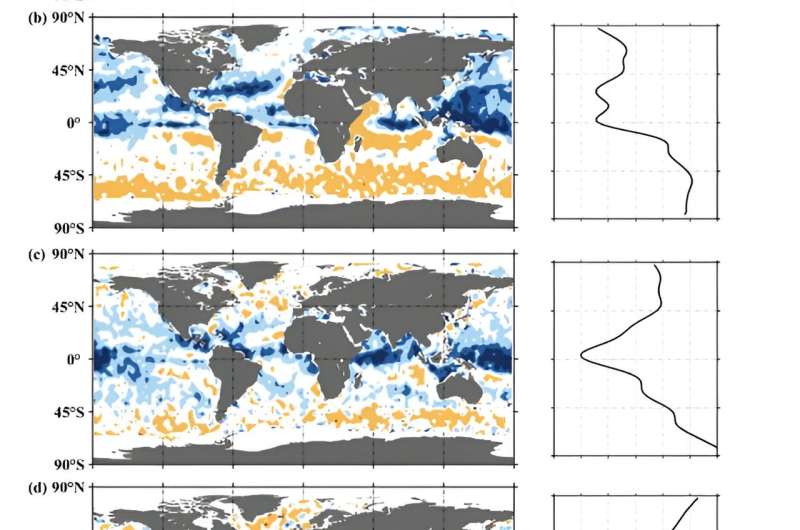This article has been reviewed according to Science X's editorial process and policies. Editors have highlighted the following attributes while ensuring the content's credibility:
fact-checked
trusted source
proofread
Wind and wave observations reveal the seasonal variations in wave-induced stress over global ocean

Recently, a study by Ph.D. student Jing Ren from Ocean University of China and Associate Prof. Sheng Chen and Prof. Fangli Qiao from First Institute of Oceanography, Ministry of Natural Resources was published in Science China Earth Sciences.
Simultaneous observations of wind and surface waves from CFOSAT are used to reveal the modulation characteristics of wave-induced stress for different wave states combined with a wave boundary layer, and it was found that wave-induced stress has a strong modulation effect on wind stress on a seasonal scale.
Global-scale wave observations are challenging, especially in terms of wave spectra. Consequently, investigations on wind stress characteristics using measured wave spectra are scarce. The research team applied a self-developed wave boundary layer model to CFOSAT, evaluating the contribution of surface wave-induced stress to wind stress on a global scale during the boreal summer and autumn seasons.
The related results had been published in November 2020 in Journal of Geophysical Research-Oceans. However, due to the limitation of data, the seasonal variations of wave-induced stress are still unclear. Therefore, the seasonal characteristics of global sea surface wave-induced stress and wind stress were analyzed by combining one-year wind and wave observations from CFOSAT with the wave boundary layer model in the present paper.

Further analysis showed that from spring to winter, larger wave-induced stress is primarily distributed in the Southern Hemisphere westerly belt and high-latitude areas of the North Atlantic, while smaller values are mainly distributed near the equator.
The percentage of increase or decrease in wind stress after considering the wave-induced stress showed a roughly symmetrical pattern between the NH and SH during the spring and autumn seasons, while the summer and winter seasons showed an asymmetrical feature. Wave-induced stress significantly modulated wind stress, resulting in zonal mean variations by up to ±30%. This finding further highlights the important modulation of surface waves on wind stress at the global scale.
More information: Jing Ren et al, Seasonal variations in wave-induced stress over global ocean based on China France Oceanography Satellite, Science China Earth Sciences (2023). DOI: 10.1007/s11430-023-1208-7
Provided by Science China Press




















